#shiso recipe
Explore tagged Tumblr posts
Text
Some highlights from the beautiful cookbook Donburi by Aki Watanabe. I'd recommend checking out the whole thing; it's available at The Japan Foundation library (which lets you sign up for free, regardless of where you live, and is amazing!)



#recipes to try#japanese food#1.#pork belly#ginger#leek#egg#spinach or greens#karashi#2.#tuna#nori#shiso#gari#wasabi#3.#salmon#shiso again#daikon#lemon
96 notes
·
View notes
Text

Tomato Prawn Wafu Pasta
78 notes
·
View notes
Text

Teenage Anarchist !
Ingredients:
1.25 oz San Bartolo Espadin Mezcal
0.75 oz Lillet Rose
0.25 oz Sidetrack Shiso Liqueur
1.5 oz watermelon syrup
0.75 oz lime juice
1 dash absinthe
Instructions:
Combine all ingredients in a shaker and shake well. Strain into a coupe glass.
Courtesy: Matthew Belanger, bartender at Death & Co, Los Angeles,
Jacob N. Layman Photography
This article was not sponsored or supported by a third-party. A Cocktail Moment is not affiliated with any individuals or companies depicted here.
#art#design#cocktails#drinks#cocktail#cocktail recipes#recipes#drink recipes#drink#teenage#anarchist#summer cocktail#summer#lime juice#watermelon#absinthe#death&co#los angeles#matthew belanger#mezcal#lillet rose#shiso
82 notes
·
View notes
Text
SHISO LEAF TEMPURA

Ingredients
Chicken breast
Shiso leaves
Ume(plum) paste Tube (Option)
Fresh Garlic (Option)
Panko
Flour
Eggs
Cooking oil
Instructions
1. Cut chicken breast into thin cutlet pieces, rinse Shiso leaves, make grated garlic(optional).
2. Prepare Flour, Eggs, Panko all in separate bowls
3. Rub grated garlic (optional) into chicken breasts and put Shiso leaves in the middle. If you decide to use Ume paste, you put a tiny amount in the middle of Shiso leave and spread it. Roll up and hold the corners with toothpicks.
4. Dunk them in Flour → eggs → Panko and deep fry them at 170C or 340C until it’s golden brown and crispy inside.
You can put cheese in the middle if that’s what you prefer
#junko#recipes#cooking#kitchen#yummy#delicious#shiso#tempura#Japan#japanese#japanese cooking#japanese food#chicken
4 notes
·
View notes
Text

0 notes
Text





blueberry shiso corn sour cream cake, recipe at elisasunga.com/recipes
35 notes
·
View notes
Text
Ever tasted a sushi roll that's tangy, herbal, and utterly addictive? 🍣🌿
🔗 Full recipe + step-by-step photos on my website! Just google "ume shiso roll sudachi"!
#recipe#food#japanesefood#cooking#japan#sushi#foodphotography#recipes#japanese culture#japanese food#foodie#foodgasm#japanese#sushi rolls#sushi recipe#umeboshi
5 notes
·
View notes
Text
Why are all my pregnancy cravings things I can’t eat??
- ham & butter baguette (if you know you know, it’s the paris olympics’ fault)
- sushi
- a specific ginger pork dumpling this local restaurant makes in the winter only
- full lactose extra mascarpone cheese tiramisu (my stomach would literally die)
- more sushi, specifically the tamago and umeboshi one and the tempura shrimp and shiso one this place that closed in 2020 made; ate them all the time when pregnant with eloise but now they’re gone ;-;
- unagi don (noone near here makes it I’d have to drive to montreal I swear I will)
- fresh peaches (which I’m really really allergic to!!)
I am constantly hungry even ravenous
I am currently looking at lactose free tiramisu recipes instead of focusing on work
#i am a food monster i’ll eat everything#this pregnancy is something else yall#something a lot of people don’t know about me:#if you tell me I can’t do something I want to do it even more#it’s why i always had a crush on the wrong people in high school#it’s my toxic trait
6 notes
·
View notes
Photo

Shiso Unusual
4 notes
·
View notes
Text
Niji-iro Tōgarashi
Niji-iro Tetsu and Hanami Sakura were married in Kasai, Minkai Empire, in the year 4698. Together, they had eleven children. To honor her children, Sakura developed a family recipe for a zesty spice blend that she dubbed "Niji-iro tōgarashi" (literally "rainbow chili pepper"), made up of an ingredient corresponding to each child. This spice blend is the secret ingredient in Sakura's famous kitsune udon and is versatile enough to use on beef, chicken, seafood, onigiri, and a variety of other dishes.
3 Tbsp red chili flakes (Akane)
2 Tbsp dried orange peel (Orenji)
2 Tbsp nori (Haiiro)
2 tsp white sesame seeds (Shiro)
2 tsp black sesame seeds (Kuro)
2 tsp red Sichuan/sansho peppercorns (Pinku)
1 tsp green Sichuan/sansho peppercorns (Midori)
1 tsp ginger powder (Kiiro)
1 tsp poppy seeds (Mizuiro)
1 tsp hemp seeds or flax seeds (Chairo)
1 tsp shiso powder (Murasaki)

Toast the peppercorns and seeds until fragrant. Add the rest of the ingredients and toast quickly. Cool, then coarsely grind together with a mortar and pestle (or in one of those new-fangled spice grinders).
Keep in an airtight container. The flavors will degrade over time, so plan to use it all within the month.
#pathfinder#pf2e#extinction curse#kitsune#original character#niji iro togarashi#niji-iro togarashi#character backstory#niji-iro#niji iro#recipe#no the secret ingredient is not love
2 notes
·
View notes
Photo

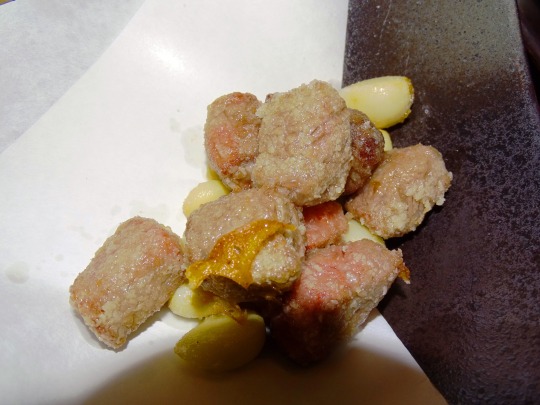


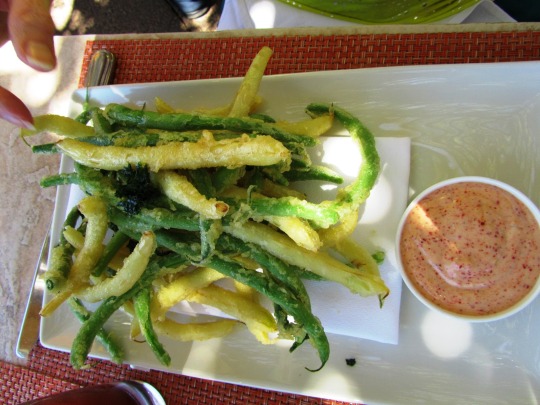

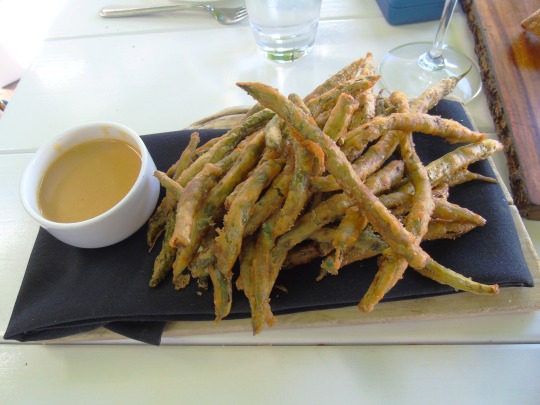

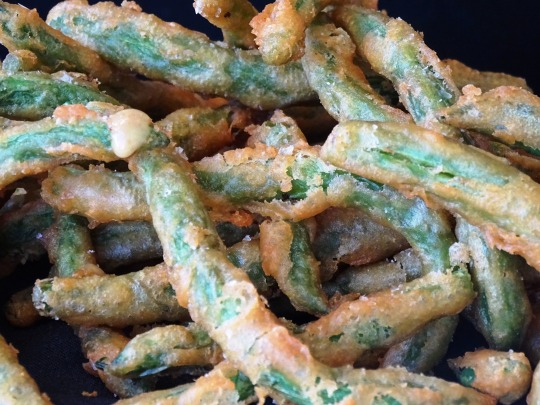
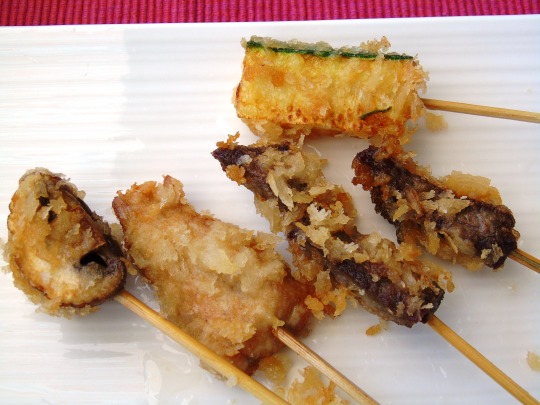
National Tempura Day
Batter and deep-fry a wide range of foods, from prawns to vegetables, and pair with Japanese staples like donburi or soba for some delicious dining.
Tempura is a deep-fried dish that the Japanese have made for centuries. When did it originate? Let us find out through the history of National Tempura Day!
Learn about National Tempura Day
On National Tempura Day, we are encouraged to enjoy any sort of dish that has been made with tempura batter. This is a Japanese fare, with most people tucking into delicious Tempura prawns on this date! However, there are many things you can deep-fry in this batter. Seafood and vegetables are the most popular, yet there’s nothing stopping you from having Tempura chicken. We are sure that there are plenty of unique concoctions you can come up with as well. Deep-fried Mars bars are popular, so what about a Tempura version?
Tempura is a traditional Japanese dish. It was introduced in the 16th century by the Portuguese that were living in Nagasaki at the time. They used fritter-cooking to achieve the light batter. The batter typically consists of soft wheat flour, for example, all-purpose flour, pastry flour, or cake flour, which is combined with iced water. Some people prefer to use sparkling water to keep the batter light.
A lot of people will also add spices, oil, starch, baking powder or baking soda, and/or eggs, especially the egg yolk. Traditionally, this batter is mixed in small batches. Chopsticks are used to mix the batter, and it is only mixed minimally, i.e. for a few seconds. Any lumps are left in the mixture, and this – along with the cold temperature – is how the crisp and unique fluffy tempura structure is created when cooking.
Cooked tempura pieces tend to be either salted and eaten as they are or they are presented with a dipping sauce. Tentsuyu sauce is the most common sauce to enjoy with this batter. A lot of people serve it with grated daikon, which is a mild-flavored winter radish, and they eat it straight after it has been fried. You will also find that tempura is typically found in udon soup or bowls of soba in Japan, typically in the form of a fritter, shiso leaf, or shrimp.
It is also not uncommon for tempura to be used in combination with other foods. So, if you want to cook a tempura-inspired meal for National Tempura Day, there are plenty of main dishes for you to consider. As mentioned, you can add tempura to the top of udon soup. It is also typically served as part of a donburi dish, which is where vegetables and tempura shrimp are served over a bowl of steamed rice. You could also make a bowl of tempura soba, which is essentially tempura that is served on top of buckwheat noodles. Or, how about making your very own creation?
History of National Tempura Day
Tempura is made up of either seafood or vegetables that are battered, deep-fried, and enjoyed by millions of people across the nation. Portuguese Jesuit missionaries introduced the recipe for tempura to Japan during the sixteenth century (around 1549). It is believed that Portuguese Jesuit Tokugawa Isyasu, founder and first shogun of the Tokugawa shogunate of Japan, loved tempura. Since the Genroku era (September 1688 – March 1704) tempura was originally a very popular food that was eaten at street vendors called yatai.
Today, chefs all over the world include tempura dishes on their menus using a wide variety of different batters and ingredients including the non-traditional broccoli, zucchini, and asparagus as well as dry fruits. Some meats, usually chicken and cheeses, are known to be served tempura-style in some American restaurants. For sushi lovers, a more recent variation of tempura sushi has the entire piece of sushi dipped in batter and tempura-fried. The word “tempura” comes from the word “tempora”, a Latin word meaning “times”, “time period” used by both Spanish and Portuguese missionaries to refer to the Lenten period or Ember Days.
The idea that the word “tempura” may have been derived from the Portuguese noun tempero, meaning a condiment or seasoning of any kind, or from the verb temperar, meaning “to season” has not been substantiated. The term “tempura” is thought to have gained popularity in southern Japan; it became widely used to refer to any sort of food prepared using hot oil, including some already existing Japanese foods. Today, the word “tempura” is also commonly used to refer to satsuma age, a fried fish cake that is made without batter. In Bangladesh, the blossoms of pumpkins or marrows are often deep-fried with a gram of rice flour spice mix, creating a Bengali style tempura known as kumro ful bhaja.
How to celebrate National Tempura Day
Celebrating National Tempura Day is easy. You gather up the ingredients necessary to create a tempura, be it a homemade recipe or one you found online, and make the dish to serve it with family as a happy dinner meal. You could decide to have tempura prawns or starter or you could opt for a main dish that incorporates tempura, such as the ones we mentioned earlier.
The great thing about this batter is that it is highly versatile and so it can be teamed with a wide range of seafood, vegetables, and meat. This means that you can have a lot of fun experimenting with different ingredients. Why not have a tempura cook-off with your friends? Or, you could host a Japanese-inspired dinner party?
Why not get some of your friends around for afternoon tea Japanese style? In Japan, tea ceremonies have been popular for many years. Combine this with some delicious tempura dishes for everyone to eat, and you’ve got the perfect lunch-time event. After all, it is always fun to do something a bit different, isn’t it?
The tea that is famous in Japan is pure Matcha green tea. We’re sure you may have even seen Matcha tea or Matcha lattes in your local coffee shop! Matcha comes in many different forms and grades. It is important to be aware of this when purchasing, as you don’t want to end up selecting the wrong product. Generally speaking, you have two key options to select from when buying Matcha – ceremonial Matcha and cooking grade Matchas.
Most people prefer to invest in ceremonial Matcha green tea, and this is because it is of the highest quality and it is suitable for everyday drinking. Of course, you can incorporate it into cooking too, but when creating a Matcha beverage it is even more important to choose high levels of quality. You won’t get better than ceremonial Matcha and this is emphasised by the fact that this Matcha is used in the traditional Japanese tea ceremonies. This type of Matcha should be powdery, very fine, and boast a bright spring green shade.
If it has a slightly yellow colour and feels coarse, you definitely do not have ceremonial grade Matcha on your hands. Ceremonial Matcha is also delicious enough to be enjoyed on its own. You can simply mix it with hot water and consume it as it is; it does not need any sweeteners or additions. Another point worth bearing in mind is that you only need about half a teaspoon of ceremonial grade Matcha when making a cup of tea. You will need more than this when using a lower grade of Matcha. Therefore, while ceremonial Matcha may be more expensive to buy initially, it will last you a lot longer, and thus the costs even themselves out.
No matter whether you are going to host a traditional Japanese tea ceremony with your friends or an evening of fine dining, you will need to decide what tempura dishes you are going to create. The great news is that there are so many different options for you to choose from!
Let’s go through some of the most popular. If you’re looking for a veggie dish, eggplant tempura is a great choice. This is known as Nasu. Or, how about Ebi? This is shrimp tempura, and it is delicious! It is typically used as a topping for udon or soba noodles, yet it can also be enjoyed on its own. Don’t confuse this with Ebi Furai; this is another type of fish, yet it is deep fried with panko batter, which is a lot heavier.
Some other options include tempura shiitake mushrooms, Ika, which is squid tempura, and Hotate, which is tempura scallops. If you are feeling really adventurous, you may want to consider Anago, which is salt-water eel. They have a sweet taste and a soft texture.
Source
#Tempura Fried Green Beans#Brix Restaurant & Gardens#California#Toronto#Deep Fried Garlic and Beef#Yountville#signature dish#appetizer#USA#Canada#original photography#Ginger Fried Chicken#National Tempura Day#7 Janaury#NationalTempuraDay#food#travel#vacation#national day
9 notes
·
View notes
Text

Perilla Braised Chicken Wings and Feet
#food#recipe#appetizer#dinner#chicken wings#chicken feet#chicken#shiso#onions#ginger#garlic#dairy free#chinese
13 notes
·
View notes
Photo
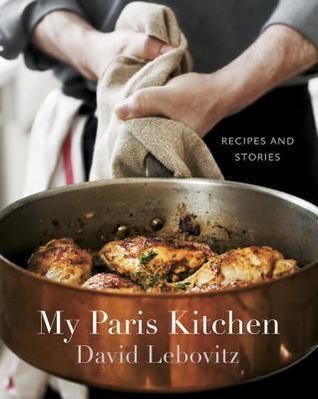

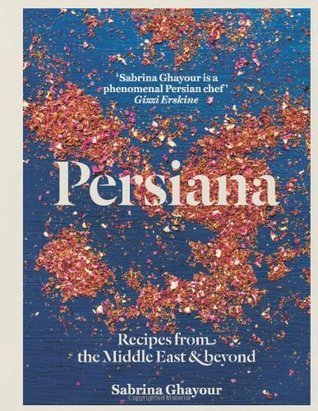
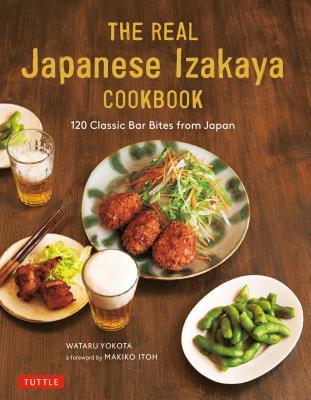
Nonfiction Thursday: Cookbooks from Around the World
My Paris Kitchen by David Lebovitz
It’s been ten years since David Lebovitz packed up his most treasured cookbooks, a well-worn cast-iron skillet, and his laptop and moved to Paris. In that time, the culinary culture of France has shifted as a new generation of chefs and home cooks—most notably in Paris—incorporates ingredients and techniques from around the world into traditional French dishes.
In My Paris Kitchen, David remasters the classics, introduces lesser-known fare, and presents 100 sweet and savory recipes that reflect the way modern Parisians eat today. You’ll find Soupe à l’oignon, Cassoulet, Coq au vin, and Croque-monsieur, as well as Smoky barbecue-style pork, Lamb shank tagine, Dukkah-roasted cauliflower, Salt cod fritters with tartar sauce, and Wheat berry salad with radicchio, root vegetables, and pomegranate. And of course, there’s dessert: Warm chocolate cake with salted butter caramel sauce, Duck fat cookies, Bay leaf poundcake with orange glaze, French cheesecake...and the list goes on. David also shares stories told with his trademark wit and humor, and lush photography taken on location around Paris and in David’s kitchen reveals the quirks, trials, beauty, and joys of life in the culinary capital of the world.
Jerusalem by Yotam Ottolenghi
In Jerusalem, Yotam Ottolenghi and Sami Tamimi explore the vibrant cuisine of their home city—with its diverse Muslim, Jewish, and Christian communities. Both men were born in Jerusalem in the same year—Tamimi on the Arab east side and Ottolenghi in the Jewish west. This stunning cookbook offers 120 recipes from their unique cross-cultural perspective, from inventive vegetable dishes to sweet, rich desserts. With five bustling restaurants in London and two stellar cookbooks, Ottolenghi is one of the most respected chefs in the world; in Jerusalem, he and Tamimi have collaborated to produce their most personal cookbook yet.
Persiana by Sabrina Gahyour
A celebration of the food and flavours from the regions near the Southern and Eastern shores of the Mediterranean Sea, with over 100 recipes for modern and accessible Middle Eastern dishes, including Lamb & Sour Cherry Meatballs; Chicken, Preserved Lemon & Olive Tagine; Blood Orange & Radicchio Salad; Persian Flatbread; and Spiced Carrot, Pistachio & Coconut Cake with Rosewater Cream.
The Real Japanese Izakaya Cookbook by Wataru Yokota
Izakaya cooking is all about enjoying hearty and flavorful Japanese food with drinks and friends at your local hole-in-the-wall hangout. Similar to tapas or pub food, izakaya fare ranges from tasty bar snacks to substantial salads, stews, grilled meats and seafood dishes--all made fresh with minimal fuss and maximum flavor--and served alongside a chilled glass of beer or sake.
The Real Japanese Izakaya Cookbook allows you to recreate over 120 of these classic izakaya dishes in your own kitchen at home. These include standards like Yakitori Chicken Skewers, Crispy Gyoza, and Grilled Wagyu Beef with Shiso. Vegans and vegetarians are also well catered to with dishes like Daikon Salad with Yuzu Dressing, Chargrilled Fava Beans and Baked Tofu with Ginger Sauce. Chef and author Wataru Yokota adds his own unique twists to signature Japanese recipes, like Miso-Simmered Pork and Grilled Mackerel with Plum Sauce.
#cookbooks#cooking#food#nonfiction#Nonfiction Reading#nonfiction reads#Library Books#Book Recommendations#book recs#Reading Recs#reading recommendations#TBR pile#tbr#tbrpile#Want To Read#to read#Booklr#book tumblr#book blog#library blog
4 notes
·
View notes
Link
0 notes
Text












Alina Meissner-Bebrout not only earned a Michelin star in the latest Michelin Guide Germany but also received the Young Chef Award. Her cuisine, though far from creative extremism, exudes playfulness and cosmopolitan flair. Alina Meissner-Bebrout is a young chef, born in Munich, who knew exactly what she wanted to do at the age of seventeen. She dived into the kitchens of renowned Michelin-starred restaurants early on, mentored by Sven Elverfeld, one of Germany's influential three-star chefs with Aqua in Wolfsburg. Years of travel, from Tyrol to Mallorca, preceded her decision to venture on her own at 23, a path that has proven to be steadily rising, as Rolling Pin explains.
In 2014, she opened her restaurant Bi:braud in Ulm. At the time, shortly after the opening, Alina Meissner-Bebrout ran the kitchen solo, which remains one of Germany's smallest Michelin-starred kitchens. Managing the restaurant without assistance and cooking independently for six days a week was indeed challenging. However, over time, she evolved and reshaped her culinary philosophy. Initially focused on tapas, she shifted towards refined Mediterranean-inspired cuisine executed with precision and without extremism.
Today, in fact, Bi:braud not only offers the classic five-course menu but also provides a vegetarian option and even the possibility of a three-course vegan menu. Among the main courses, the Öllinger corn-fed chicken breast or porcini and lovage cannelloni stand out. These dishes masterfully encapsulate Alina's technique and creativity. In fact, her recipes, in their simplicity, exude all the strength and curiosity drawn from distant and cosmopolitan realities.
Playful amuse-bouches like spelt and rye bread with miso and onion butter or a taco with shiso, radish, and kimchi exemplify her innovative approach. After Chef Meissner-Bebrout's kitchen was mentioned in the coveted Michelin Guide Germany 2022, the restaurant transformed its menu offerings, focusing on tasting menus from classic to vegan. Naturally, Alina Meissner-Bebrout is no longer alone in the kitchen; she is now supported by three talented chefs. Alina's unstoppable talent was recently awarded with her first Michelin star and the title of "Young Chef Award 2023," both conferred by the prestigious 'Red' guide.
0 notes
Text




blueberry shiso corn sour cream cake, recipe at elisasunga.com/recipes
197 notes
·
View notes